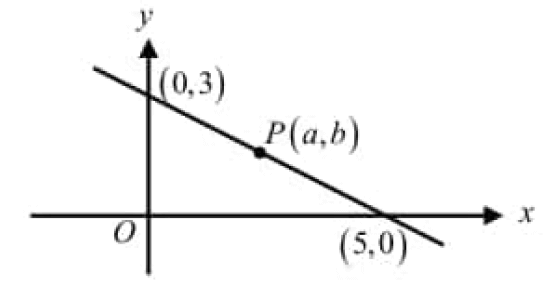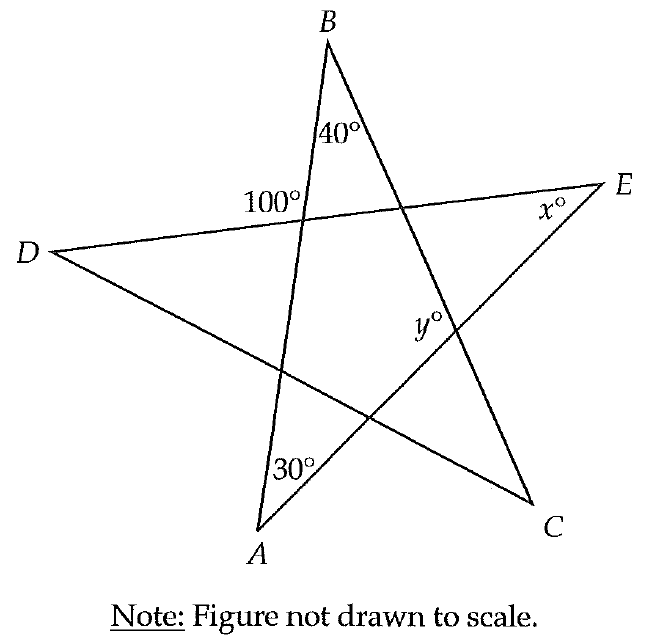REDUCING EACH RATIONAL EXPRESSIONS TO LOWEST TERMS
Definition of rational expression :
An expression is called a rational expression if it can be written in the form of
p(x)/q(x)
(where p(x) and q(x) are polynomials and q(x) ≠ 0)
Reduction of rational expressions :
A rational expression p(x)/q(x) is said to be in its lowest form if
GCD [p(x), q(x)] = 1
To reduce a rational expression to its lowest form, follow the steps given below.
Step 1 :
Factorize the numerator and the denominator
Step 2 :
If there are common factors in the numerator and denominator, cancel them.
Step 3 :
The resulting expression will be a rational expression in its lowest form.
Note :
Sometimes it may be necessary to use algebraic identities.
Example 1 :
Express in simplest form.
x/(x2)
Solution :
= x/(x2)
= 1/x
So, the answer is 1/x.
Example 2 :
Express in simplest form.

Solution :
By using cross multiplication, we get
= (x2 - 9)/x / (2x + 6)/x
= (x2 - 9)/x ⋅ x/(2x + 6)
= (x2 - 9)/2(x + 3)
Using algebraic identity a2 - b2, we get
a2 - b2 = (a + b)(a - b)
= (x + 3) (x - 3)/2(x + 3)
= (x - 3) / 2
So, the answer is (x - 3)/2.
Example 3 :
Express in simplest form.

Solution :
x2 - 4 = x2 - 22 = (x + 2)(x - 2)
Applying factored form in the numerator, we get
= (x + 2)(x - 2) / (x + 2)
= x - 2
So, the answer is x - 2.
Example 4 :
Express in simplest form.

Solution :
Factoring the numerator :
= x2 - 6x + 9
= x2 - 3x - 3x + 9
= x(x - 3) - 3(x - 3)
= (x - 3)(x - 3)
Factoring the denominator :
= x2 - x - 6
= x2 - 3x + 2x - 6
= x(x - 3) + 2(x - 3)
= (x + 2)(x - 3)
Writing the factored form in the numerator and denominator :
= (x - 3)(x - 3) / (x + 2)(x - 3)
= (x - 3) / (x + 2)
Example 5 :
Express in simplest form.
The expression (x2y2 - 9)/(3 - xy) is equivalent to
(A) -1 (B) 1/(3 + xy) (C) -(3 + xy) (D) 3 + xy
Solution :
(x2y2 - 9)/(3 - xy)
Factoring the numerator :
x2y2 - 9 = (xy)2 - 32
= (xy - 3)(xy + 3)
The denominator :
= (3 - xy)
= -(xy - 3)
Writing the factored form, we get
= (xy - 3)(xy + 3) / -(xy - 3)
= -(xy + 3)
So, the answer is -(xy + 3)
Example 6 :
Express in simplest form.

Solution :
= 3x2 - 27
Factoring 3, we get
= 3(x2 - 9)
= 3(x2 - 32)
= 3(x + 3)(x - 3) ----(1)
= 18x + 30
Factoring 6, we get
= 6(3x + 5) ----(2)
x2 - 7x + 12 = x2 - 4x - 3x + 12
= x(x - 4) - 3(x - 4)
= (x - 4)(x - 3) ----(3)
3x2 - 7x - 20 = 3x2 - 12x + 5x - 20
= 3x(x - 4) + 5(x - 4)
= (x - 4)(3x + 5) ----(4)
(1) / (2) ÷ (3) / (4)
= [3(x + 3)(x - 3) / 6(3x + 5)] ÷ [ (x - 4)(x - 3) / (x - 4)(3x + 5)]
= [3(x + 3)(x - 3) / 6(3x + 5)] ⋅ [ (x - 4)(3x + 5)/(x - 4)(x - 3)]
= (x + 3) / 2
So, the answer is (x + 3)/2.
Example 7 :
Expressed as a fraction in lowest terms,
(x2 - x - 2)/(x2 - 4), x ≠ ±2 is equivalent to
(A) x/(x+2) (B) (x-1)/(x-2) (C) (x+1)/(x+2)
(D) (-x-2)/(-4)
Solution :
= (x2 - x - 2)/(x2 - 4)
Factoring the numerator :
x2 - x - 2 = x2 - 2x + 1x - 2
= x(x - 2) + 1(x - 2)
= (x + 1)(x - 2) -------(1)
x2 - 4 = x2 - 22
= (x - 2)(x + 2) -------(2)
(1) / (2)
= (x + 1)(x - 2) / (x - 2)(x + 2)
= (x + 1) / (x + 2)
So, the answer is (x + 1)/(x + 2).
Example 8 :
What is (6x2 - 4x)/(2x2 - 4x) reduced to simplest term ?
(A) (3x-2)/(x+2) (B) (3x+2)/(x-2) (C) (3x+2)/(x+2)
(D) (3x-2)/(x-2)
Solution :
By taking common factor, we get
6x2 - 4x = 2x(3x - 2)
2x2 - 4x = 2x(x - 2)
= 2x(3x - 2) / 2x(x - 2)
= (3x - 2) / (x - 2)
So, the answer is (3x - 2)/(x - 2).
Example 9 :
What is (x2 + x - 20)/(4 - x) expressed in simplest form ?
(A) -x - 5 (B) x + 5 (C) 5 - x (D) x - 5
Solution :
= (x2 + x - 20)/(4 - x)
x2 + x - 20 = x2 + 5x - 4x - 20
= x(x + 5) - 4(x + 5)
= (x - 4)(x + 5)
from 4 - x, factoring negative we get
= -(x - 4)
= (x - 4)(x + 5) / -(x - 4)
= -(x + 5)
So, the answer is -x - 5.
Example 10 :
Expressed in simplest form,

is equivalent to
(A) n + 1 (B) n (C) n - 1 (D) (n - 1)/(n + 1)
Solution :
By cross multiplication, we get
= [(n2 - 1) / n] / [(n + 1) / n]
= [(n + 1)(n - 1)) / n] x [n / (n + 1)]
= (n - 1)
So, the answer is n - 1.
Kindly mail your feedback to v4formath@gmail.com
We always appreciate your feedback.
©All rights reserved. onlinemath4all.com
Recent Articles
-
Digital SAT Math Problems and Solutions (Part - 134)
Apr 02, 25 12:40 AM
Digital SAT Math Problems and Solutions (Part - 134) -
SAT Math Resources (Videos, Concepts, Worksheets and More)
Apr 02, 25 12:35 AM
SAT Math Resources (Videos, Concepts, Worksheets and More) -
Digital SAT Math Problems and Solutions (Part 135)
Apr 02, 25 12:32 AM
Digital SAT Math Problems and Solutions (Part 135)

